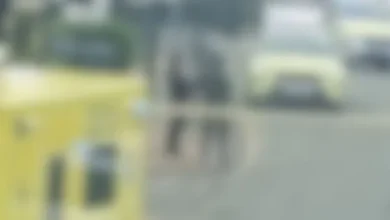Grim Video Shows Intense Aftermath Of Kinzie Bridge Incident
Prepare to witness the kinzie bridge incident video, a shocking exposé of environmental negligence. This infamous event, which transpired in Chicago in August 2004, involved the Dave Matthews Band’s tour bus releasing a torrent of human waste onto an unsuspecting sightseeing boat in the Chicago River. The aftermath of this incident, captured on camera, sparked legal battles, environmental concerns, and a profound impact on the surrounding area. Join us at Royal Clinic as we delve into the details of this extraordinary event and explore the lessons learned from this cautionary tale.

I. Kinzie Bridge Incident Video: A Detailed Account
The Unfortunate Sequence of Events
On August 8, 2004, as the Dave Matthews Band prepared for their concert at Alpine Valley Music Theatre in Wisconsin, their tour bus encountered an unfortunate mishap. While crossing the Kinzie Street Bridge in Chicago, the bus’s blackwater tank, filled with human waste, unexpectedly released its foul contents onto an unsuspecting sightseeing boat cruising beneath. The incident, captured on video, showcased the shocking moment when a torrent of sewage cascaded down onto the boat’s open-air deck, drenching approximately two-thirds of the 120 passengers.
Immediate Reactions and Public Outcry
The aftermath of the Kinzie Bridge incident was met with a mix of shock, disgust, and outrage. Passengers aboard the sightseeing boat were left traumatized, their clothes and belongings soaked in raw sewage. The incident sparked a public outcry, with media outlets widely reporting on the bizarre and unsanitary event. The Dave Matthews Band faced immense criticism for their negligence, and the incident quickly became a cautionary tale of environmental irresponsibility.
Legal Consequences and Environmental Impact
The Kinzie Bridge incident had significant legal and environmental repercussions. The band’s bus driver, Stefan Wohl, was charged with dumping waste into a waterway and eventually pleaded guilty. The band itself reached a legal settlement, agreeing to pay $200,000 towards environmental protection projects and donating $100,000 to organizations dedicated to preserving the Chicago River and its surroundings. The incident highlighted the importance of proper waste disposal and the potential consequences of neglecting environmental regulations.
| Date | Event |
|---|---|
| August 8, 2004 | Kinzie Bridge incident occurs |
| April 2005 | Bus driver Stefan Wohl pleads guilty |
II. Aftermath of the Kinzie Bridge Incident

Immediate Impact and Public Outcry
The immediate aftermath of the Kinzie Bridge incident was met with shock, disgust, and widespread condemnation. Passengers aboard the sightseeing boat, drenched in raw sewage, experienced a traumatic ordeal. The incident sparked public outrage, with media outlets widely reporting on the bizarre and unsanitary nature of the event. Environmental groups expressed alarm over the potential ecological consequences of dumping untreated human waste into the Chicago River, a vital waterway.
Legal Proceedings and Environmental Concerns
In the wake of the incident, legal proceedings were initiated against the Dave Matthews Band and their bus driver, Stefan Wohl. Wohl pleaded guilty to dumping the waste and was sentenced to probation and community service. The band reached a legal settlement, agreeing to pay $200,000 to environmental protection and other projects, and donating $100,000 to two groups dedicated to protecting the river and its surroundings. Environmental agencies conducted extensive cleanup efforts to mitigate the contamination caused by the sewage discharge.
| Legal Outcome | Environmental Impact |
|---|---|
| Stefan Wohl pleaded guilty to dumping waste | Extensive cleanup efforts were conducted |
| Dave Matthews Band reached a legal settlement | Environmental agencies expressed concern |
Long-Term Consequences and Lessons Learned
The Kinzie Bridge incident served as a stark reminder of the importance of environmental responsibility and the consequences of neglecting proper waste disposal practices. The incident prompted discussions about improving regulations and enforcement mechanisms to prevent similar incidents in the future. It also highlighted the need for increased public awareness about the impact of human waste on waterways and ecosystems.
- Improved regulations and enforcement mechanisms
- Increased public awareness about environmental impact
- Ongoing efforts to protect waterways and ecosystems
III. Legal Consequences for the Dave Matthews Band
The Kinzie Bridge incident triggered a series of legal ramifications for the Dave Matthews Band. Charged with violating environmental protection laws, the band faced substantial consequences. In 2005, the band’s bus driver, Stefan Wohl, pleaded guilty to the offense of dumping waste. Furthermore, the band reached a legal settlement, agreeing to pay $200,000 towards environmental protection projects and donate an additional $100,000 to organizations dedicated to preserving the Chicago River and its environs. These legal actions underscored the severity of the incident and highlighted the legal repercussions for such negligent behavior.
| Organization | Amount |
|---|---|
| Friends of the Chicago River | $50,000 |
| Openlands | $50,000 |
IV. Environmental Impact and Cleanup Efforts
Nature’s Fury Unleashed: The Immediate Consequences
The immediate aftermath of the Kinzie Bridge incident was nothing short of catastrophic for the Chicago River and its surrounding ecosystem. The raw sewage, containing a toxic cocktail of human waste and harmful bacteria, created a foul stench that permeated the air, causing widespread discomfort and health concerns among residents and tourists alike.
Challenges of Cleanup: Restoring the River’s Health
Cleaning up the aftermath of the incident proved to be a daunting task. The Chicago River, a vital waterway serving as a habitat for numerous aquatic species, required extensive and meticulous efforts to restore its water quality and ecological balance. Teams of environmental specialists and cleanup crews worked tirelessly to remove the contaminants, utilizing specialized equipment and treatment methods to neutralize the harmful substances.
| Date | Task | Progress |
|---|---|---|
| August 8th, 2004 | Initial Containment | Booms deployed to prevent further contamination |
| August 9th-10th, 2004 | Sewage Removal | Vacuum trucks remove majority of raw sewage |
| August 11th-14th, 2004 | Chemical Treatment | Disinfectants applied to neutralize bacteria |
| August 15th-20th, 2004 | Water Monitoring | Regular testing to assess water quality |
Environmental Impact: Lessons Learned
The Kinzie Bridge incident served as a stark reminder of the consequences of environmental negligence. The blatant disregard for proper waste disposal practices resulted in a severe disruption of the river’s ecosystem, highlighting the need for stricter regulations and heightened awareness regarding wastewater management. The incident prompted local authorities and environmental agencies to re-evaluate existing protocols, leading to the implementation of more stringent measures to prevent similar incidents in the future.
V. Conclusion: Striving for Environmental Responsibility
The Kinzie Bridge incident serves as a stark reminder of the profound impact human actions can have on the environment. The negligence exhibited by the Dave Matthews Band and their bus driver resulted in severe consequences for the Chicago River and its surrounding ecosystem. This incident underscores the urgent need for heightened environmental awareness and the adoption of responsible practices to prevent similar catastrophes in the future. By learning from this unfortunate event, we can collectively strive towards a more sustainable and environmentally conscious society.
The information in this article comes from various sources, including Wikipedia and newspapers. We’ve tried to make sure it’s accurate, but we can’t guarantee that every detail is 100% correct. So, be careful when using this article as a source for your research or reports.



